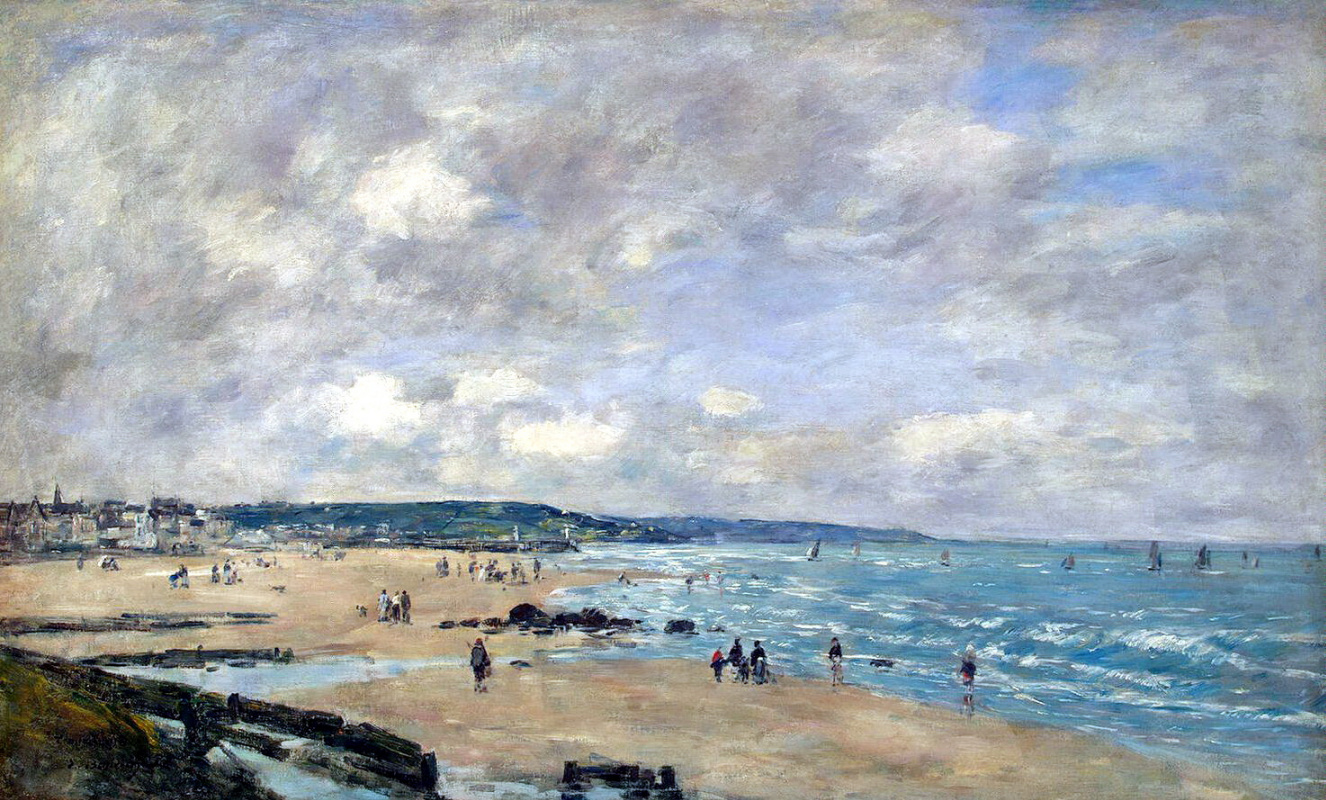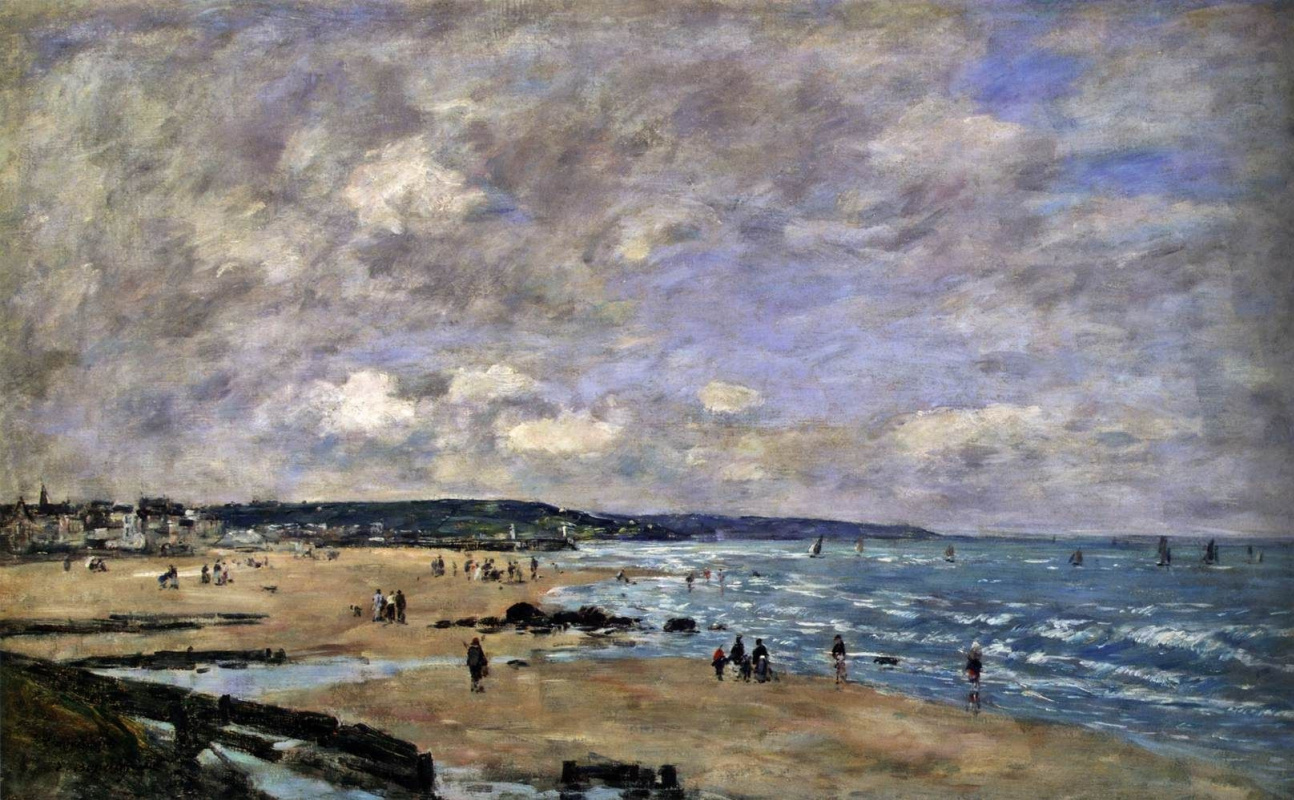log in
Enter site
Login to use Arthive functionality to the maximum
The beach at Trouville
Eugene Boudin • Painting, 1893, 56×91 cm
Description of the artwork «The beach at Trouville»
For the first time, Boudin saw the beach in Trouville in 1861. For the next twenty years, whenever possible, he spent summer at Trouville.
“The Creator has poured out his beautiful and warming light everywhere, and we reproduce not so much this world as the element that embraces it,” this was what the artist himself said about his mission. Reproducing light was exactly what the Impressionists did! For them, the light-air mass is no more a “background”, but becomes a full-fledged element of the picture, and often the actual plot. It is not a coincidence, Eugène Boudin was the first teacher of Claude Monet, it was he who prompted Monet to turn to the landscape. Boudin is considered to be one of the forerunners of Impressionism. His canvas, The Beach at Trouville is characterized by instability, fluidity and elusiveness of reality, the absence of a rigid framework of the moment — everything that would be fully manifested in the works of the Impressionists.
A broad brushstroke, muted sky-blue and sandy-sunny colours, barely outlined figures of people, clouds blown by the wind, choppy waves, sailing ships — the artist united everything in this “beautiful and warming” light, showed them in motion, demonstrating the changeable and yet an eternal moment.
The painting by Eugène Boudin came to the Hermitage in 1997. The museum acquired the canvas from the London collector and art dealer Julian Barran, who worked as an auctioneer at the Sotheby’s auction for many years.
Written by Aliona Esaulova
“The Creator has poured out his beautiful and warming light everywhere, and we reproduce not so much this world as the element that embraces it,” this was what the artist himself said about his mission. Reproducing light was exactly what the Impressionists did! For them, the light-air mass is no more a “background”, but becomes a full-fledged element of the picture, and often the actual plot. It is not a coincidence, Eugène Boudin was the first teacher of Claude Monet, it was he who prompted Monet to turn to the landscape. Boudin is considered to be one of the forerunners of Impressionism. His canvas, The Beach at Trouville is characterized by instability, fluidity and elusiveness of reality, the absence of a rigid framework of the moment — everything that would be fully manifested in the works of the Impressionists.
A broad brushstroke, muted sky-blue and sandy-sunny colours, barely outlined figures of people, clouds blown by the wind, choppy waves, sailing ships — the artist united everything in this “beautiful and warming” light, showed them in motion, demonstrating the changeable and yet an eternal moment.
The painting by Eugène Boudin came to the Hermitage in 1997. The museum acquired the canvas from the London collector and art dealer Julian Barran, who worked as an auctioneer at the Sotheby’s auction for many years.
Written by Aliona Esaulova



